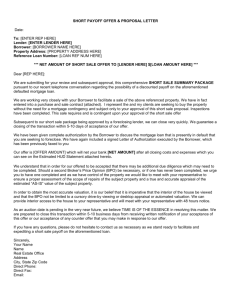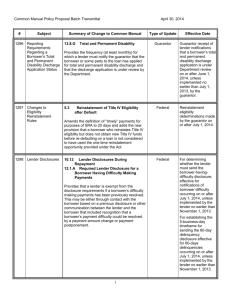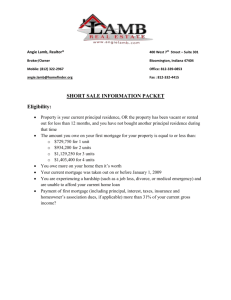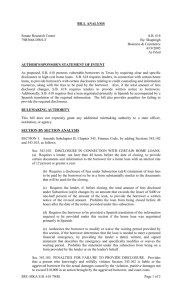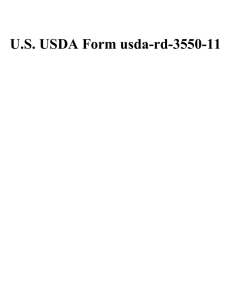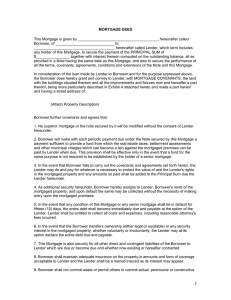14.74 Foundations of Development Policy
advertisement
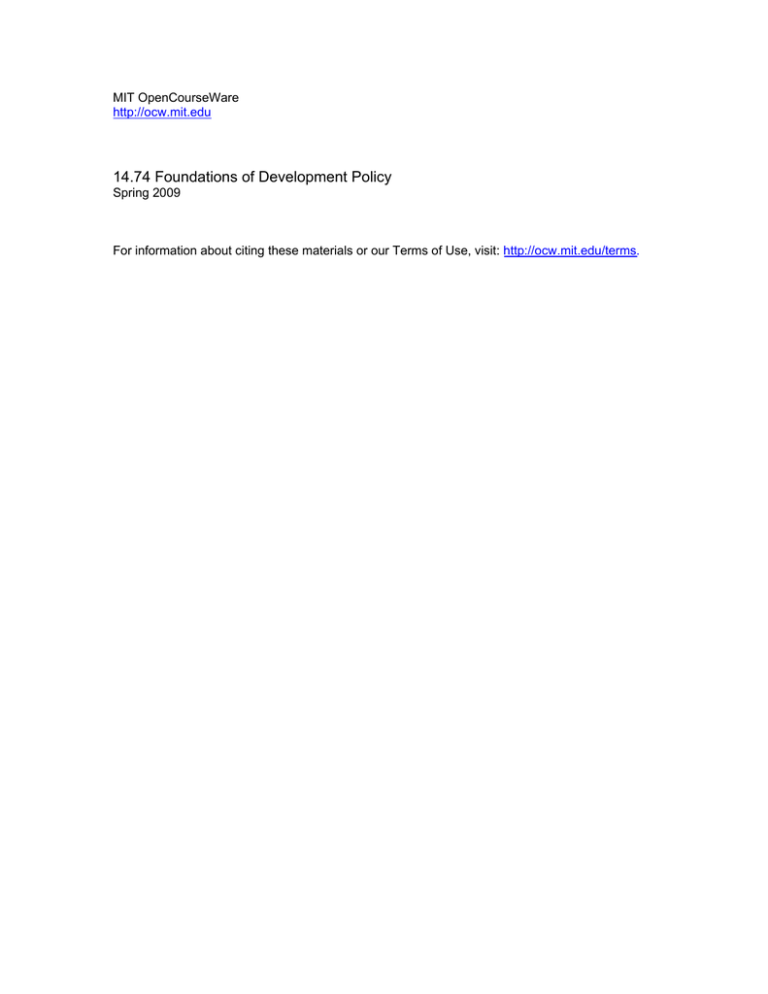
MIT OpenCourseWare http://ocw.mit.edu 14.74 Foundations of Development Policy Spring 2009 For information about citing these materials or our Terms of Use, visit: http://ocw.mit.edu/terms. 14.74 Problem set 6 due Monday, May 11, 2009 1. Assume a linear production technology F(K) = σK. After the return is realized, a borrower (with starting capital W) who has borrowed K-W at gross interest rate r has an incentive to default and not return the money he borrowed. In order to default on the loan, the borrower has to incur a cost cK. This reflects the cost of fudging the books to conceal the project returns, channeling funds to off-shore accounts, or simply the cost in terms of being disapproved by his parents and fellow community members. Imagine that if the borrower refuses to pay, there is no way the lender can chase after him, nor is there a court to which the lender can complain. a. Derive the maximum leverage ratio, i.e. K/W ratio, as a function of the interest rate r and c, such that the borrower chooses not to default. How does it vary with r and c and explain intuitively why? b. What would be the individual demand for capital, i.e. amount of investment K*, taking into the constraint derived in part 1? c. General equilibrium: there are N identical entrepreneurs in the economy and there is a fixed supply of capital K (this fixed total supply includes the initial wealth in the village). Assume that the credit market clears at some equilibrium interest rate r, which is low enough and everyone wants to make positive investment but is credit rationed. What is the equilibrium interest rate? (hint: set supply = total demand in the village) 2. Consider the following model of the credit market: A borrower needs to invest W + L = I in a high-yield technology, where W denotes his/her initial wealth and L his/her requested loan. The source of capital market imperfection is ex post moral hazard. Namely, once the return σ(W + L) is realized, the borrower can either repay immediately, or he/she can stall. Stalling revenues away from the lender has a cost to the borrower (who has to keep ahead of the lender), and let this cost be a fixed proportion τ of total revenues. Finally, whenever the borrower defaults on his/her repayment obligation, the lender may still invest effort into debt collection. Specifically, assume that a lender who incurs a non-monetary effort cost L · C (p) has probability p of collecting her due repayment r · L. a. Show that anticipating a monitoring effort p from the lender, the borrower’s payoff if default is (explain the terms): σ(1 − τ )(L + W ) − prL, Write down the condition such that the borrow will decide not to (strategically) default. b. Show that this implies a limit on how much the lender will be willing to lend at a fixed p. What happens to this limit when productivity of capital σ goes up and when the interest rate goes down? Give intuitions for your results. c. Turning to the choice of the optimal monitoring policy p, write down the maximization problem for a risk-neutral lender (choose p to solve...) d. In the special case where C (p) = −c · ln(1 − p), what p will the lender choose in terms of r? e. Show that with p optimally chosen by the above formula (i.e. assuming C (p) = −c · ln(1 − p)), the credit limit does not depend on the interest rate. Give intuition for your result, and why it differs from the model studied in the previous question (question 1 above).
